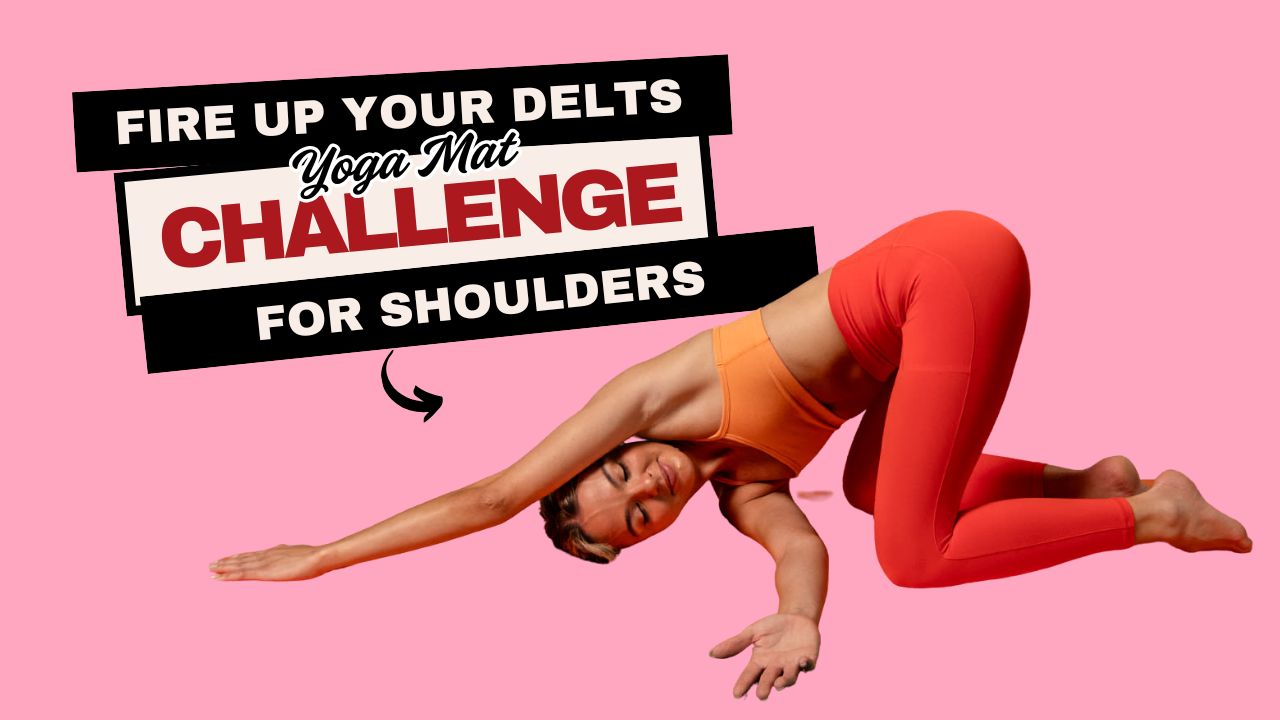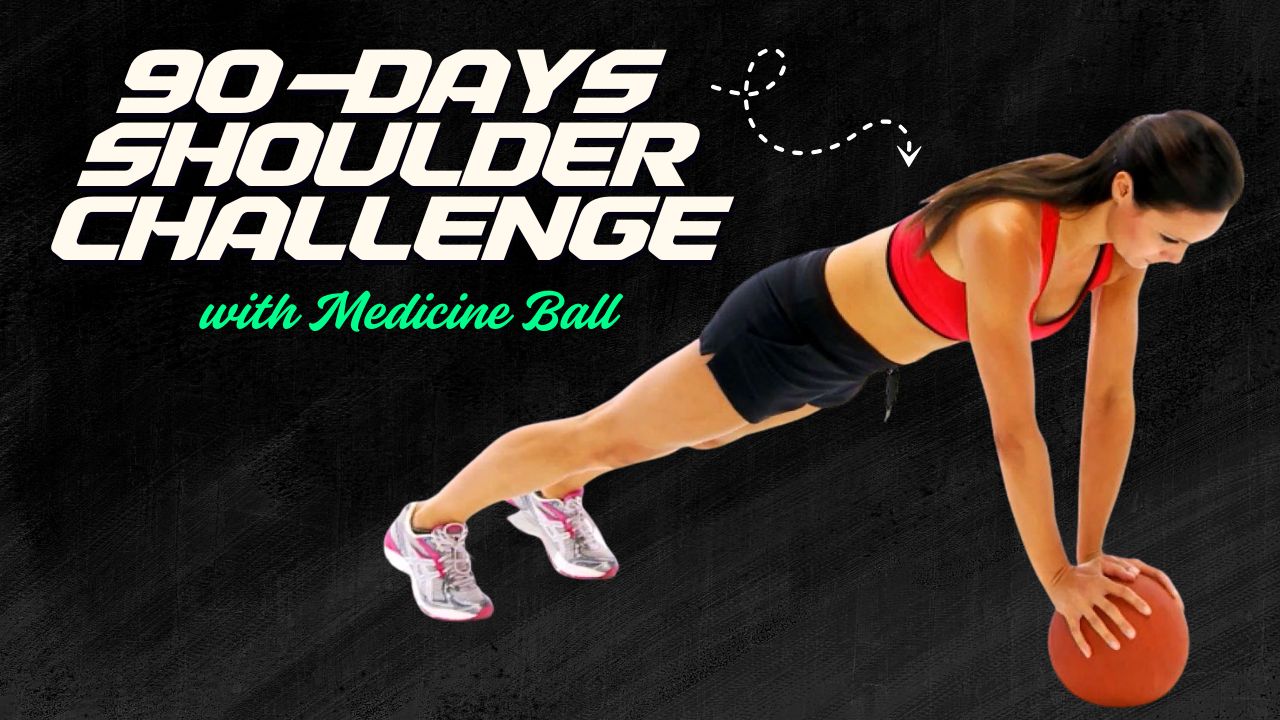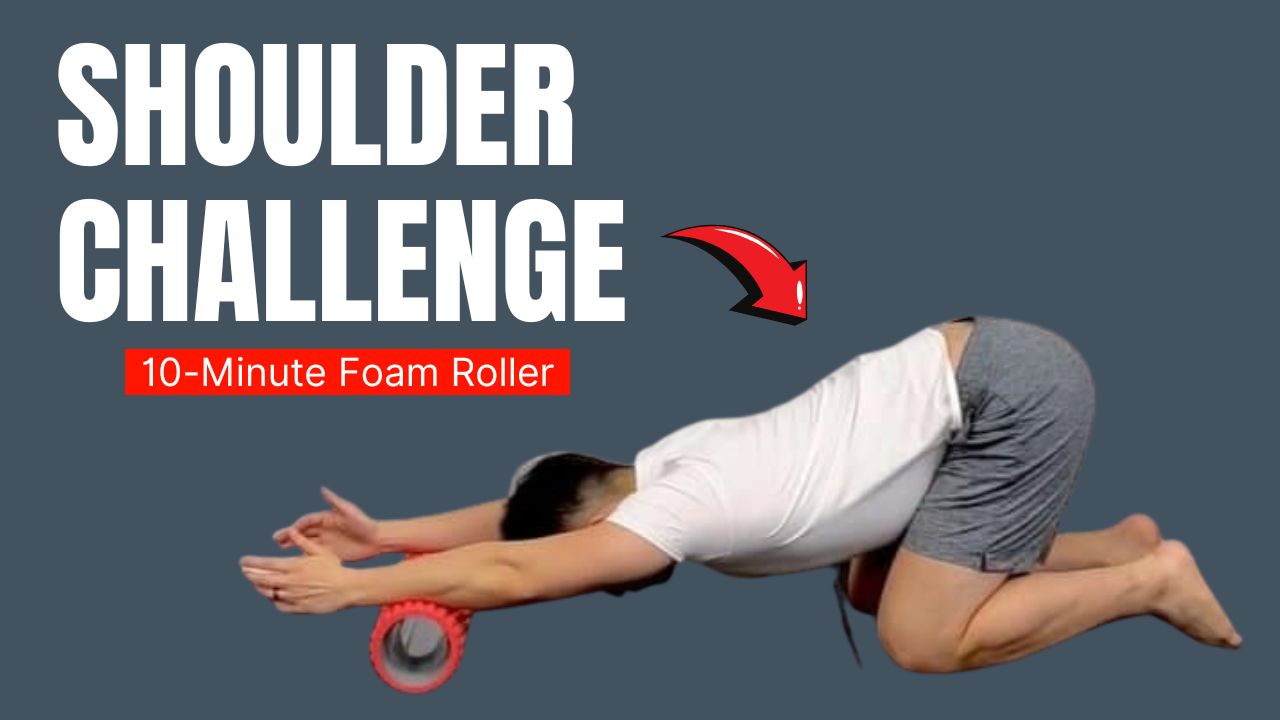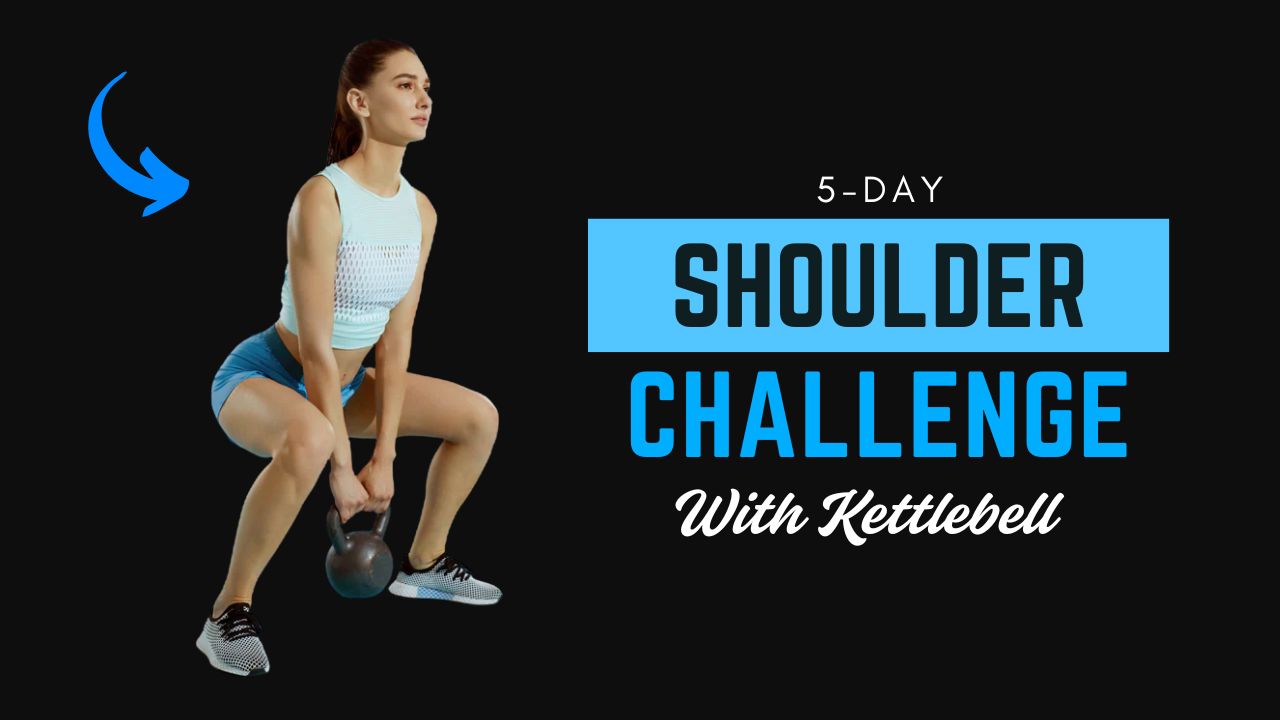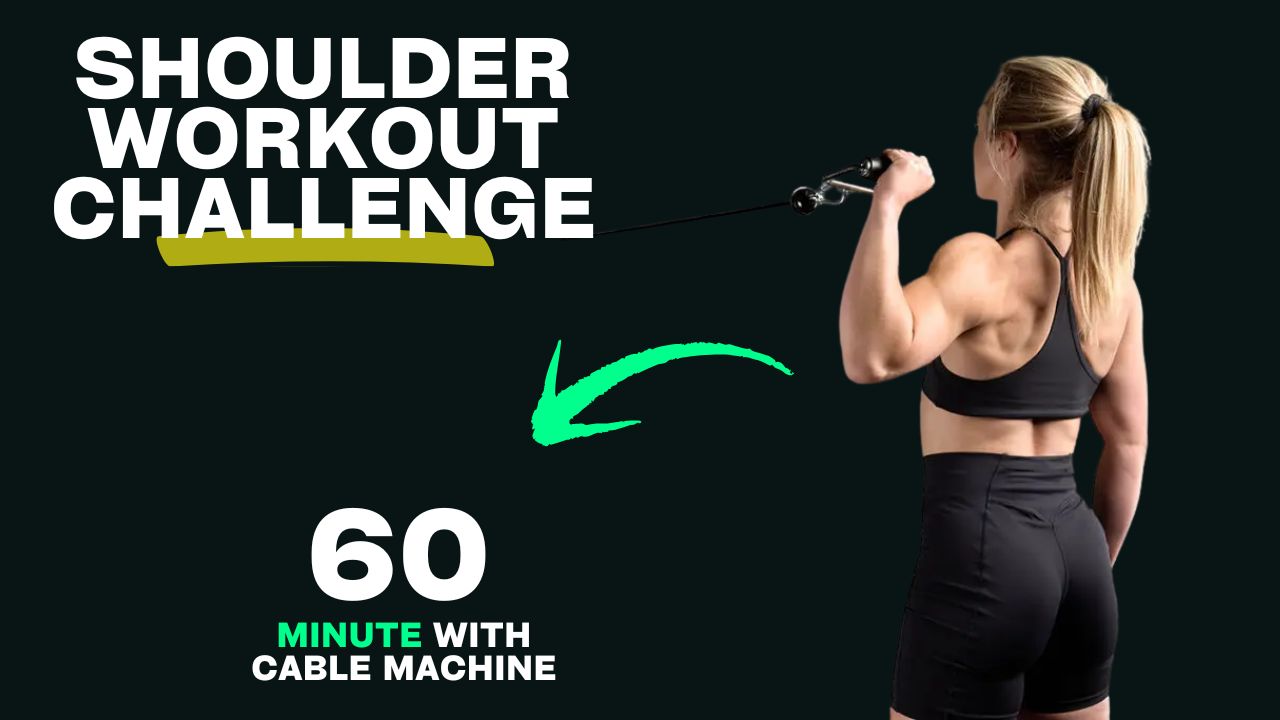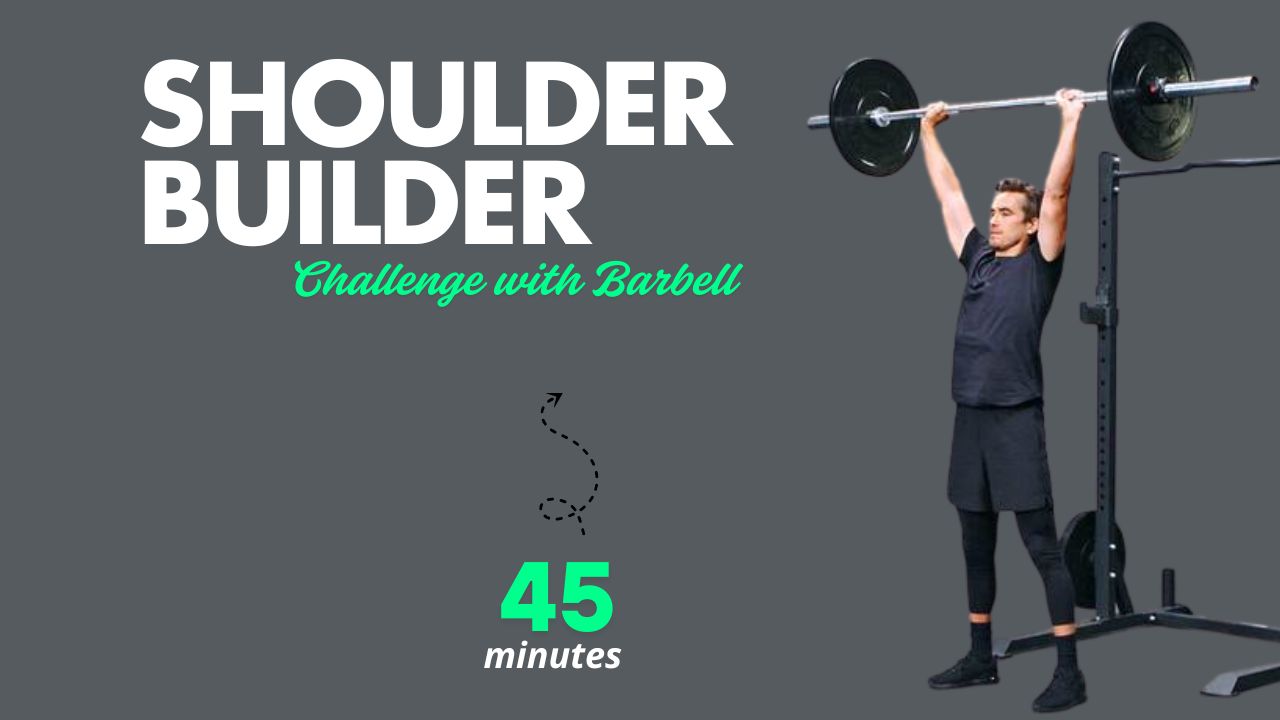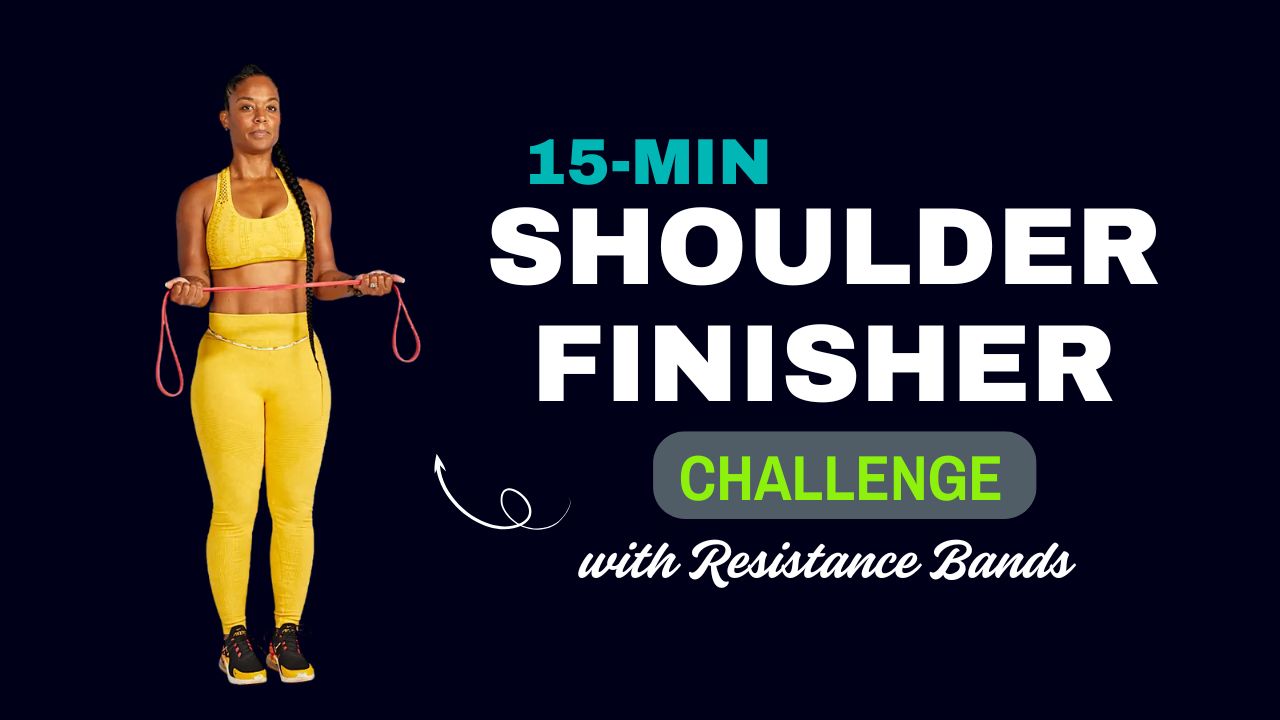When people think about powerful legs, they often jump to quads and calves. But here’s the truth: your hamstrings are the secret engine of strength, speed, and injury prevention. Weak or neglected hamstrings aren’t just limiting your gains—they’re slowing your entire athletic potential.
Do you know?
Tight or underdeveloped hamstrings are one of the most common causes of lower back pain and limited mobility in both athletes and everyday movers.
Whether you want that explosive power for sprinting, to bulletproof your knees, or simply sculpt that impressive back-of-leg curve, these barbell hamstring exercises will help you build raw strength while increasing flexibility and range of motion.
Let’s dive in.
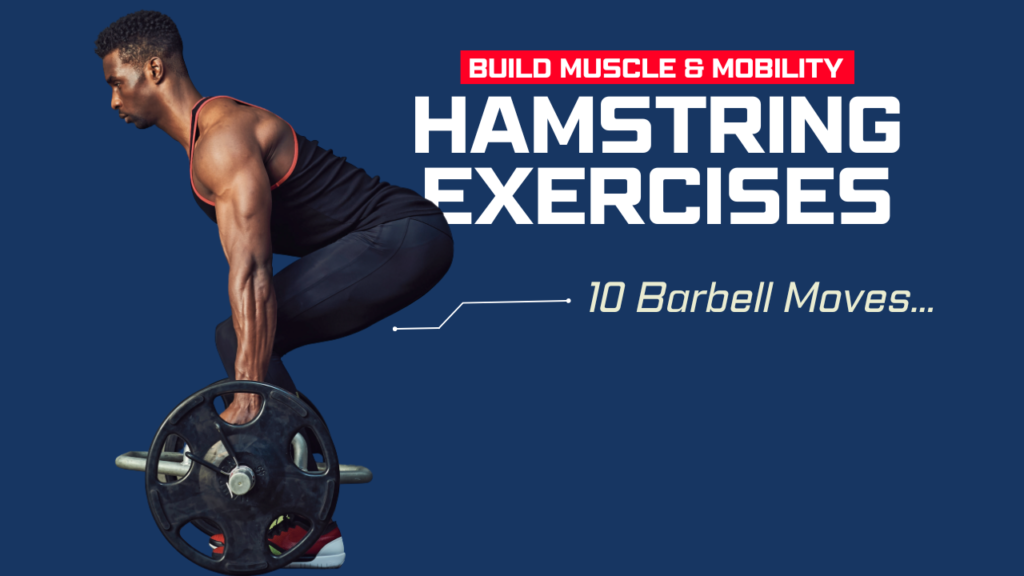
Table of Contents
What Happens After 30 Days of Barbell Hamstring Training
| Positive Results | Possible Challenges |
|---|---|
| Noticeable muscle definition and tighter hamstrings | Muscle soreness (DOMS), especially in the beginning |
| Improved hip hinge mechanics and lifting form | Risk of injury if form is ignored under heavier weights |
| Increased strength in deadlifts and posterior chain | Possible lower back strain if posture isn’t maintained |
| Better flexibility and reduced hamstring tightness | Overuse fatigue if recovery is neglected |
| Enhanced athletic performance (jumping, sprinting, etc.) | Plateauing without progressive overload or variation |
| Improved posture and balance | Minor joint stress if weights are too heavy too soon |
| Boosted glute-hamstring coordination | Imbalances if not paired with glute and quad work |
| Higher calorie burn and metabolism boost | Boredom if the routine lacks variety or progression |
Also Read: From Average to Alpha: 14 Dumbbell Workouts for Bigger Biceps
Do’s and Don’ts for Barbell Hamstring Training
| Do’s | Don’ts |
|---|---|
| Warm up with dynamic movements (e.g., leg swings, light RDLs) | Don’t start heavy lifting without a proper warm-up |
| Maintain a neutral spine throughout each rep | Don’t round your back during deadlifts or good mornings |
| Use a controlled tempo, especially on the way down (eccentric phase) | Don’t rush through reps or let the weight drop |
| Start with light to moderate weight to master form | Don’t ego lift—it leads to injury, not progress |
| Focus on the hip hinge, not squatting the movement | Don’t bend from the knees when targeting hamstrings |
| Incorporate both bilateral and single-leg variations | Don’t rely solely on one exercise like RDLs |
| Rest 48 hours before targeting hamstrings again | Don’t overtrain—hamstrings need recovery to grow |
| Stretch and foam roll post-workout | Don’t ignore tightness or stiffness—mobility matters |
| Use proper equipment (padding, secure collars, etc.) | Don’t skip safety measures with the barbell |
| Listen to your body and modify movements if needed | Don’t push through sharp pain—adjust or stop instead |
1. Barbell Romanian Deadlift (RDL)
How To:

- Stand with feet shoulder-width apart, holding a barbell in front of your thighs.
- Keep a slight bend in the knees and hinge at the hips, lowering the bar close to your legs.
- Lower until you feel a deep stretch in your hamstrings, then drive your hips forward to return to standing.
Benefits:
- Deep hamstring activation
- Improves hip hinge mechanics
- Enhances posterior chain strength
Myth Buster:
Many believe RDLs are just for bodybuilders. In reality, they’re a gold-standard for athletes and rehab programs alike.
Also Read: 13 Dumbbell Chest Workouts That Build Size & Definition Fast
2. Barbell Good Mornings
How To:
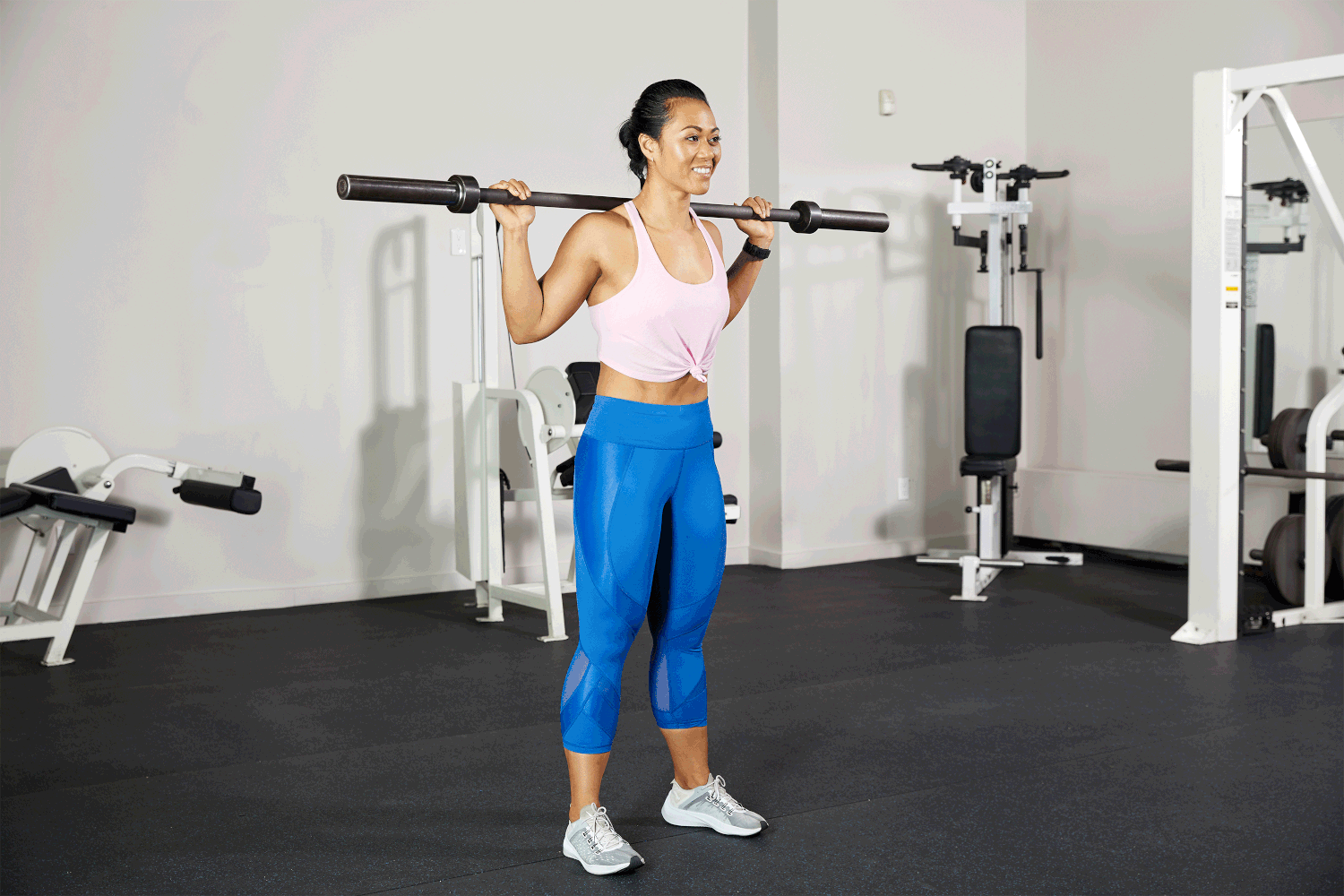
- Place the barbell on your upper traps.
- With a soft knee bend, hinge at the hips until your torso is nearly parallel to the floor.
- Return to standing by contracting your hamstrings and glutes.
Benefits:
- Strengthens hamstrings, glutes, and spinal erectors
- Improves hip mobility and posture
- Helps prevent lower back injuries
3. Barbell Glute Bridge
How To:

- Lie on your back, knees bent, feet flat on the floor.
- Place the barbell across your hips (use padding).
- Push through your heels and raise your hips, squeezing glutes and hamstrings at the top.
Benefits:
- Builds explosive posterior strength
- Isolates the glutes and hamstrings
- Excellent for improving sprint performance
4. Barbell Stiff-Leg Deadlift
How To:
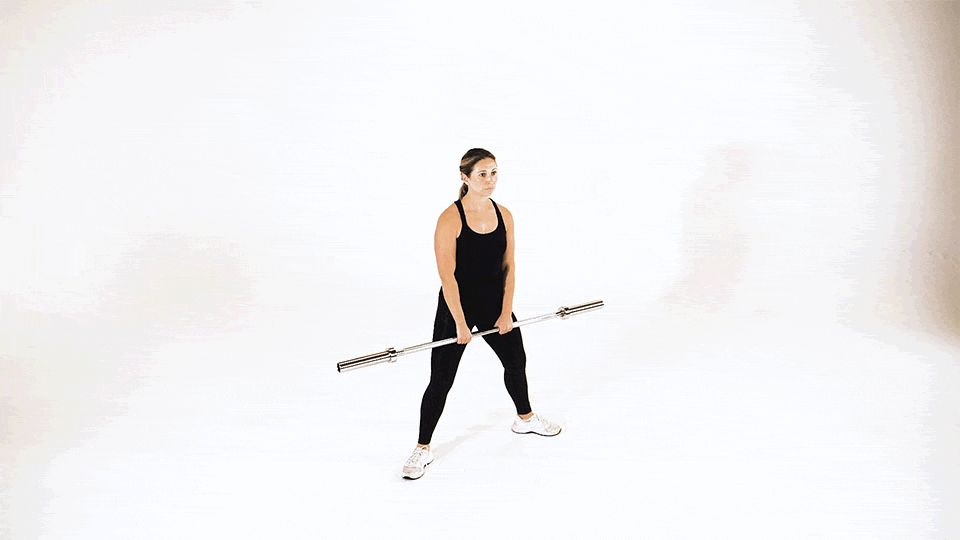
- Similar to RDL but with less knee bend.
- Lower the bar while keeping your legs almost straight.
- Emphasize hamstring stretch and controlled tempo.
Benefits:
- Targets the entire hamstring length
- Improves flexibility under load
- Adds muscular detail to the back of the legs
Pro Tip: Keep your spine neutral to avoid unnecessary back strain.
Also Read: 13 Equipment-Based Calf Exercises to Power Up Your Lower Legs
5. Barbell Lunge (Reverse)
How To:
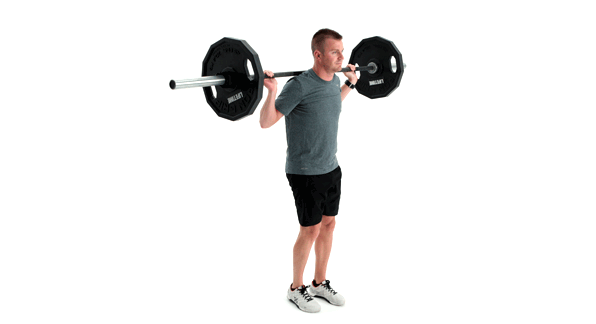
- Hold the barbell on your traps.
- Step back with one leg, lowering into a lunge.
- Push through the front heel to return to standing.
Benefits:
- Hits hamstrings dynamically
- Builds balance and single-leg strength
- Enhances mobility and coordination
6. Barbell Single-Leg Romanian Deadlift
How To:
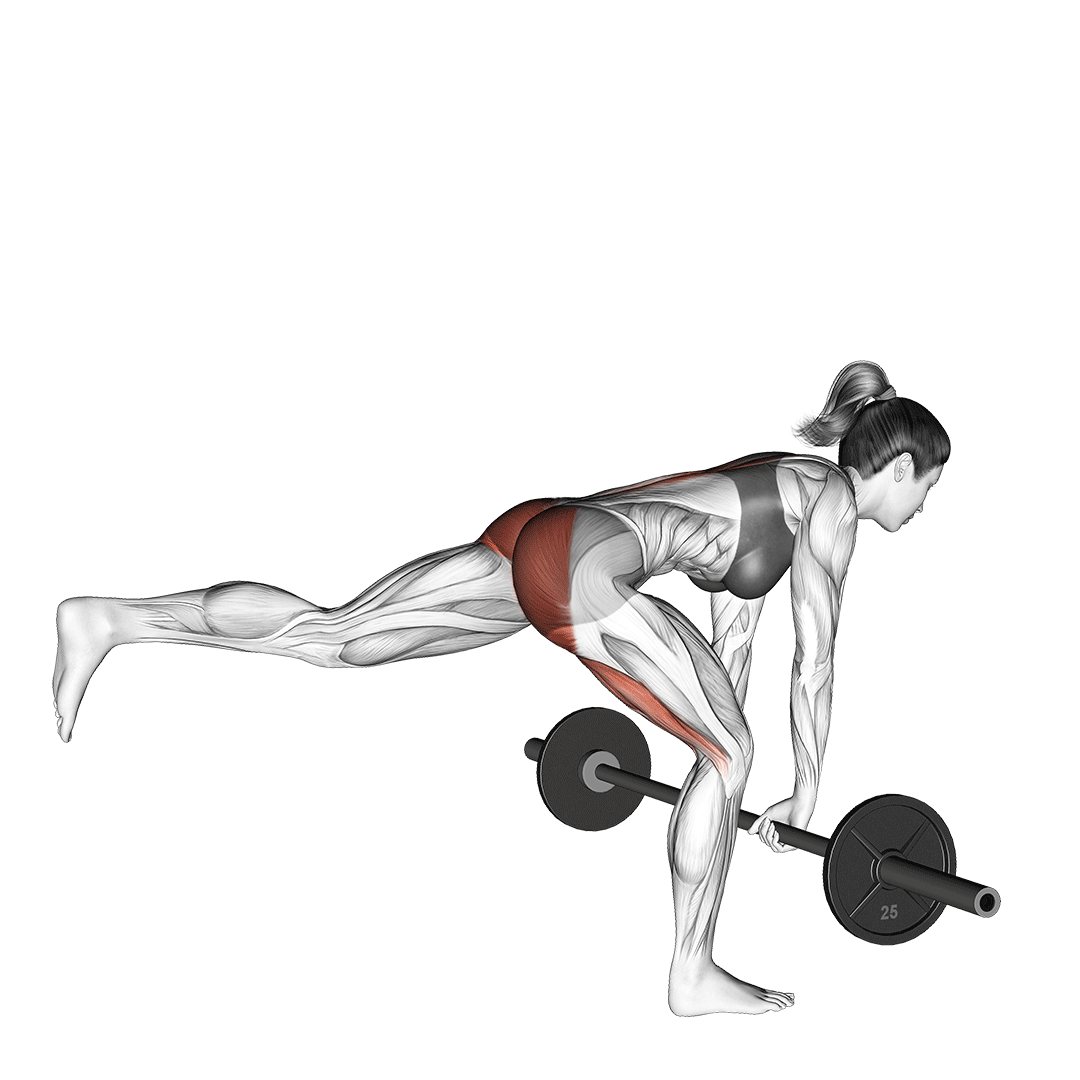
- Hold the barbell or two small barbells.
- Stand on one leg, hinge forward while keeping the other leg extended back.
- Focus on hip hinge and hamstring stretch.
Benefits:
- Fixes strength imbalances
- Improves core and hip stability
- Great for athletes and runners
7. Barbell Hip Thrust with Hamstring Focus
How To:

- Sit against a bench, barbell on hips.
- Feet farther from glutes than usual to shift focus from glutes to hamstrings.
- Drive hips up and squeeze at the top.
Benefits:
- Builds both strength and size in hamstrings
- Enhances hip drive for athletes
- Reduces knee injury risk
Also Read: 13 Bodyweight Abductor Exercises for Stronger, Sculpted Hips
8. Barbell Zercher Good Morning
How To:
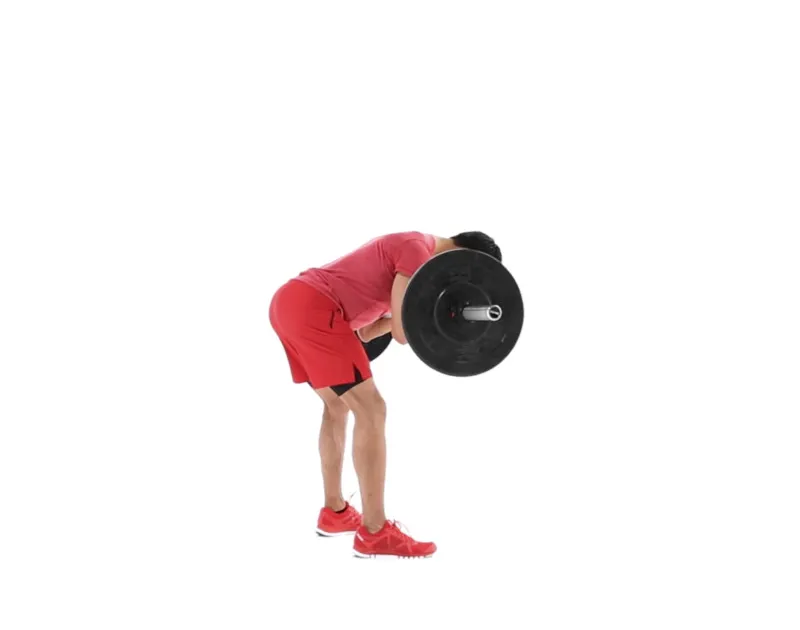
- Hold the barbell in the crook of your elbows (Zercher position).
- Hinge at the hips like a regular good morning.
Benefits:
- Deep core and posterior chain engagement
- Improves functional mobility
- Hits the hamstrings differently due to the load position
9. Barbell Step-Through Deadlift
How To:
- Perform like an RDL but with one foot stepping slightly forward, and the other slightly back.
- Load remains centered but weight distribution changes.
Benefits:
- Targets hamstrings and glutes unilaterally
- Improves balance and muscle control
- Adds variety to deadlift routines
10. Barbell Snatch-Grip Deadlift
How To:
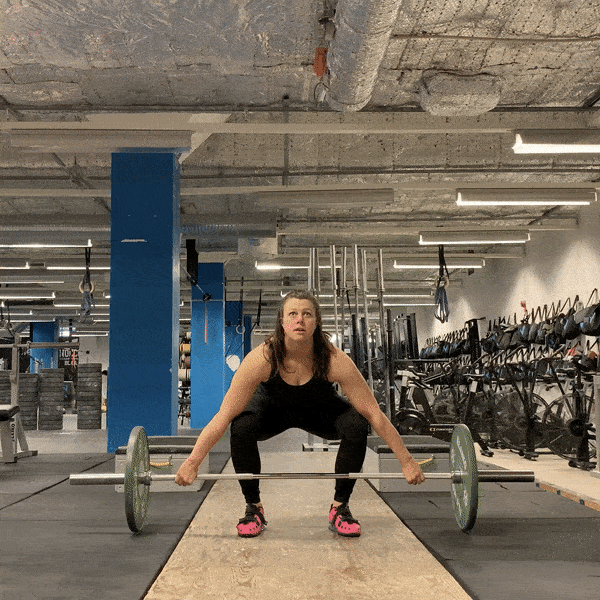
- Use a wide grip (outside shoulders).
- Perform a deadlift, focusing on upper back tightness and hamstring tension.
Benefits:
- Greater hamstring stretch due to wider grip
- Builds overall pulling power
- Enhances flexibility and mobility
Interesting Fact:
The snatch-grip forces your hips lower and hamstrings longer—making it a mobility powerhouse as well as a strength builder.
Also Read: 10 Forearm Exercises Using Gym Gear That Build Iron Grip & Bigger Arms
Benefits of Barbell Hamstring Workouts (Quick Recap)
- Improved hip mobility and posture
- Boosted leg strength and muscle density
- Reduced risk of ACL and knee injuries
- Increased power for sprinting, jumping, and lifting
- Better balance and core control
Final Thoughts: Don’t Just Train Legs—Train Smarter
Your hamstrings are more than aesthetic—they’re the foundation of movement, protection, and performance. Training them with these barbell variations helps you build muscle, but also strengthens movement patterns and mobility that benefit everything from deadlifts to daily life.
Remember: Strong hamstrings = strong foundation.
Skip them, and you’re only half-training your legs.
Frequently Asked Questions (FAQs)
Can I build strong hamstrings using only barbell exercises?
Yes, absolutely. Barbell exercises like Romanian deadlifts, good mornings, and hip thrusts target all areas of the hamstrings effectively—especially when performed with proper form and progressive overload.
How often should I train hamstrings with a barbell?
2 times per week is ideal for most people. This allows for optimal growth and recovery while avoiding overtraining.
Are barbell hamstring exercises safe for beginners?
Yes, but start with light weight and focus heavily on form. Movements like Romanian deadlifts and glute bridges are beginner-friendly when done correctly.
What’s the difference between Romanian deadlifts and stiff-leg deadlifts?
Romanian deadlifts involve a slight knee bend and controlled hip hinge, making them easier on the lower back. Stiff-leg deadlifts keep the legs almost straight and place more stretch on the hamstrings.
Can barbell exercises improve hamstring flexibility?
Yes. Controlled eccentric movements like RDLs improve flexibility over time by lengthening the muscle under load.
Should I stretch before or after hamstring workouts?
Dynamic stretches before (e.g., leg swings), and static stretches after your workout are recommended to boost performance and reduce injury risk.
Can I replace machines with barbell hamstring workouts?
Definitely. Barbell movements often provide more functional strength, stability, and muscle activation than machines.
What are signs of hamstring overtraining?
Constant soreness, reduced performance, tightness, or pain during basic movement can indicate overuse. Reduce volume or frequency and focus on recovery.
Are these barbell hamstring workouts suitable for home gyms?
Yes! Most exercises require only a barbell, plates, and a bench (optional). They’re highly adaptable to small spaces.
Will these exercises help with running or athletic performance?
Yes. Strong hamstrings improve sprint speed, jumping ability, deceleration control, and reduce injury risks—especially ACL tears.
